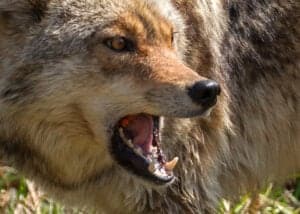The coyote is a wild canine that is closely related to both the North American wolf and fox. They are typically much smaller than a wolf and are usually closer in size to domesticated dogs. However, the way they carry themselves is remarkably similar to a fox. They range in color and location and have a very wide spectrum of communication. These wild canines may be considered a threat to many, but they are especially important to our Earth and are incredibly fascinating. So, let’s uncover 10 incredible coyote facts!

1. They Are Also Called Prairie Wolves
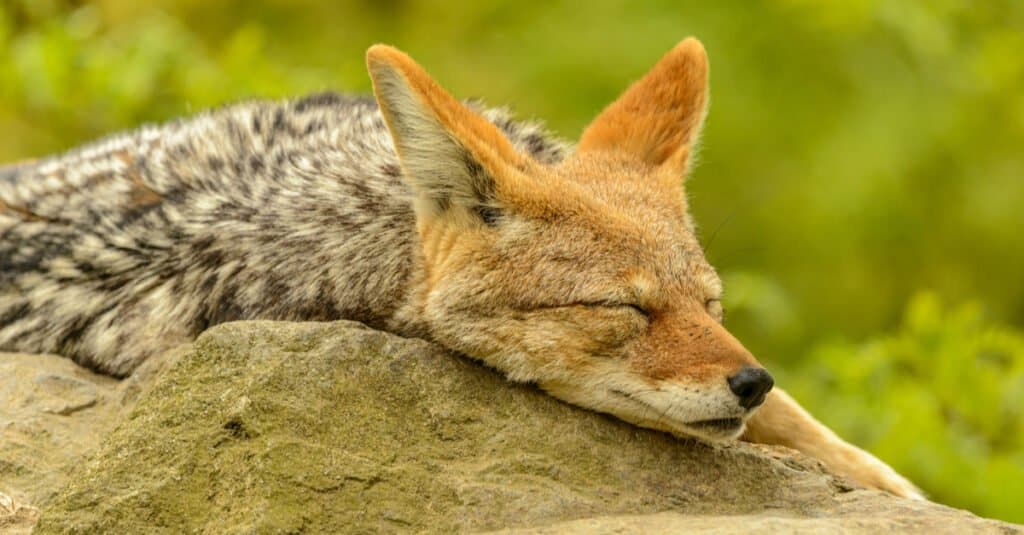
Although smaller than wolves in size, coyotes are often called prairie wolves.
©Petr Ganaj/Shutterstock.com
Although coyotes are much smaller than your average wolf, they are often referred to as prairie wolves. On average, an adult female coyote can weigh anywhere from 15-40 lbs. An adult male coyote can weigh anywhere from 18-44 lbs. Although they are closer to wolves than they are domesticated dog breeds, they are still relatively small in comparison. The average North American wolf can weigh up to 180 lbs. Coyotes may be smaller, but they are still amazingly fast and strong for their size!
2. Their Diet Contains a Wide Variety of Food
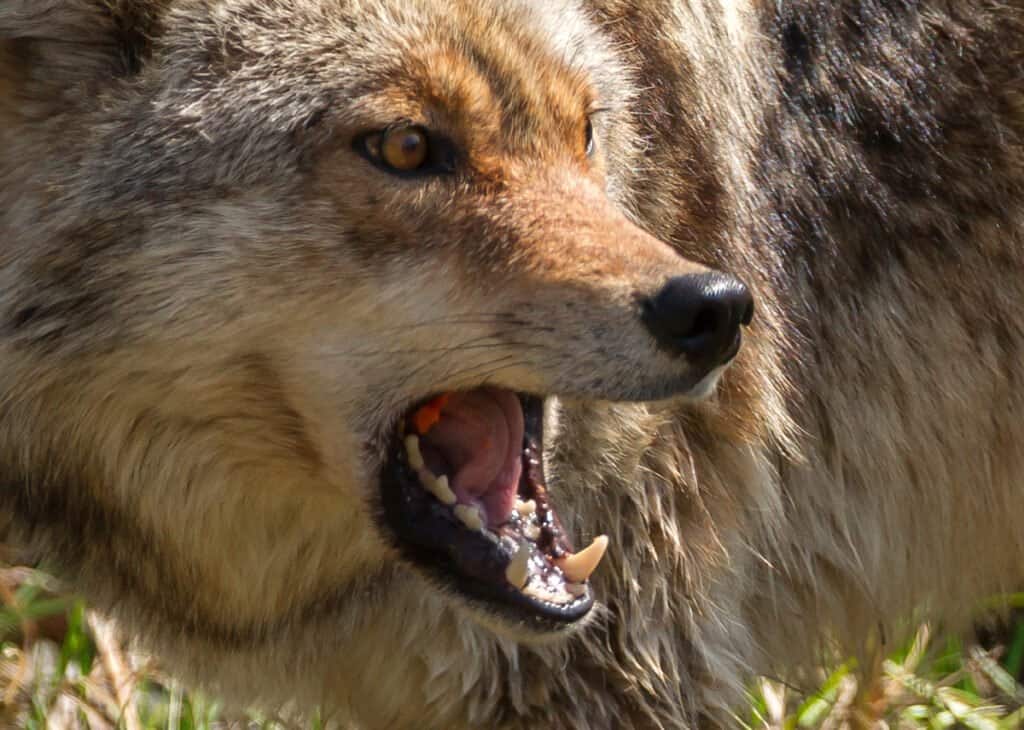
Coyotes use their sharp canines to tear into meat, but as omnivores, they enjoy a varied diet.
©Derek R. Audette/Shutterstock.com
Because coyotes are primarily carnivores, they can also survive on an omnivorous diet. They eat a lot of rodents and other small animals that can otherwise be invasive. Apart from rodents, they also eat rabbits, birds, squirrels, fruit, grass, deer, and insects. Although they love these food sources, they also can be a nuisance to farm owners. This is mostly because they love eating livestock including chickens.
3. They Can Run Very Fast
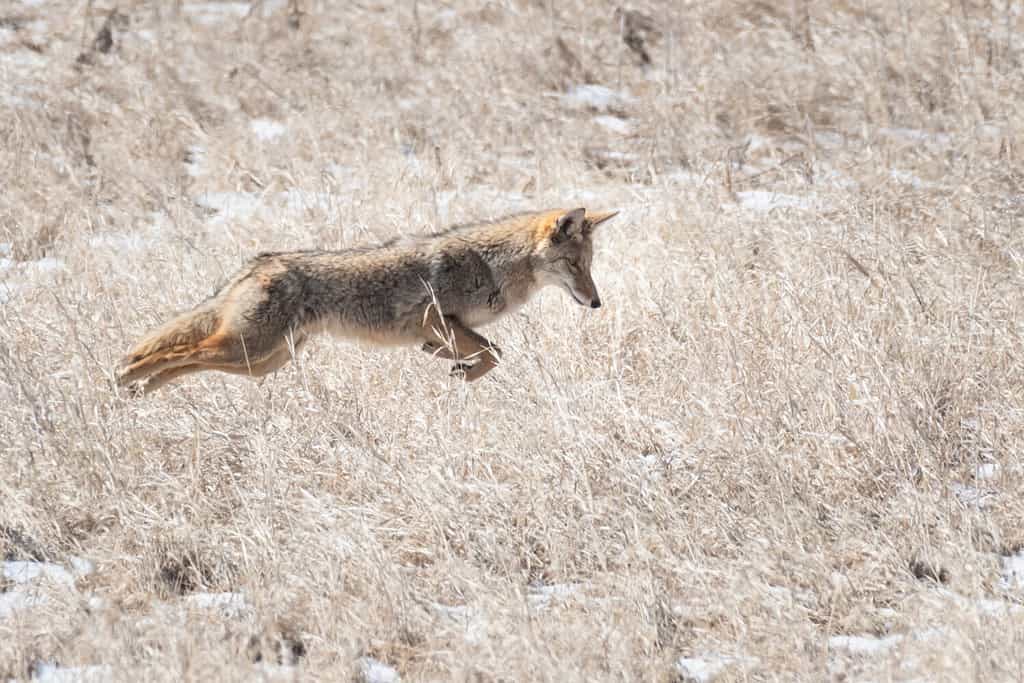
Since coyotes are smaller and hunt smaller prey, they can run a lot faster than most wolves.
©Eivor Kuchta/Shutterstock.com
Coyotes are incredibly fast and can run just over 40 mph. In fact, because they are smaller and hunt smaller prey, they can run a lot faster than most wolves. This incredible speed makes for an important chase when catching prey or traveling in packs. They run at an average of 35 mph. They use their fast sprinting in pursuit of fast-moving prey or to get away from nearby threats.
4. They Use Many Forms of Communication

Coyotes have the same dental structure that most dogs have
©Angel DiBilio/Shutterstock.com
Coyotes have a broad dialect and can make about 11 different sounds as a way of communicating. They can growl as well as huff in defense, or even bark or howl to communicate long-distance. Coyotes tend to howl if there is a threat nearby and they want to alarm their pack. They whine and yelp as a form of submission, as well as perform group howls as a form of reconnection. When they are traveling in packs, they let out a series of synchronized cries as a form of traveling communication.
5. Coyotes Have 19 Different Subspecies

Centrally located coyotes can range anywhere from the Midwest to Texas.
©iStock.com/GatorDawg
Coyotes have 19 subspecies and their colors and sizes range because of this. Western coyotes are usually found in California and are lighter in color. However, northwestern coyotes that dwell in Washington, Alaska, and Canada can be anywhere from deep brown, to gray, or red. Of the 19 subspecies, six of these are identified as western coyotes. Eastern coyotes range from the Great Lakes to New York. Centrally located coyotes can range anywhere from the Midwest to Texas. They can also range in color, anywhere from gray to deep brown to red as well.
6. Coyotes Mate For Life
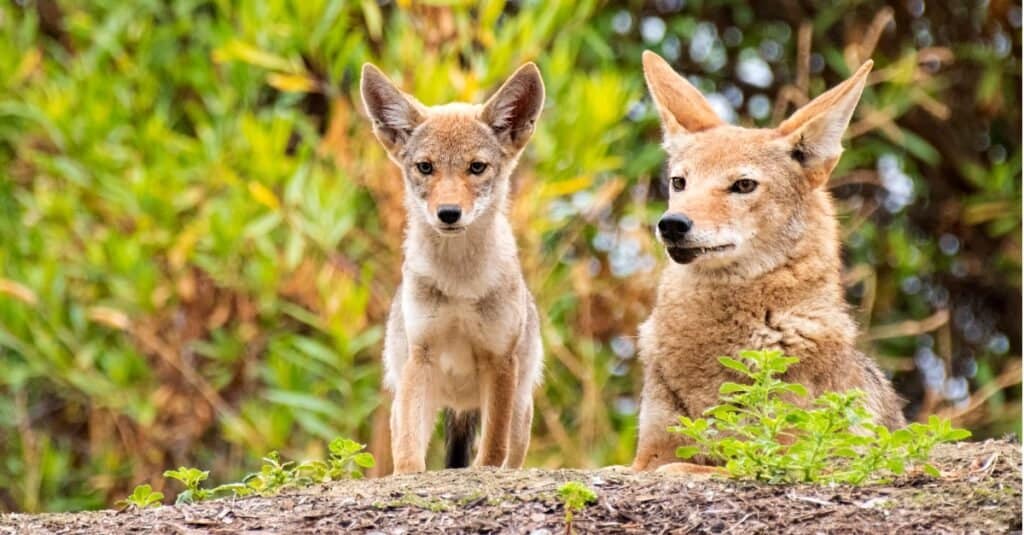
Coyotes hunt at night, reducing the chance of humans coming into contact with them.
©iStock.com/roclwyr
Once a Coyote finds a mate, it will travel and reproduce with that same mate for many years. In fact, they are often mates for life. The life span of a wild coyote is usually no longer than a decade. Once they find a mate, they will typically reproduce between January and March. The average littler ranges around six pups. Their litter sizes can also change due to available food sources. So, if there is an abundant amount of food for their pack, they can deliver up to 19 pups at a time. However, if the food source is limited, they will usually deliver a smaller amount ranging anywhere from one to six pups.
7. They Are Native to North America

Coyotes will sometimes hunt in packs.
©FRAYN/Shutterstock.com
Coyotes are native to North America and can be found anywhere in Canada, Alaska, and Central America. Most coyotes live on the Great Plains; however, their range has expanded greatly across both America and Canada. These are versatile creatures that can pretty much adapt to any environment. It can be warm or cold in the location that they settle in. They can use almost any habitat; however, they prefer prairies and wide-open plains.
8. They Are Nocturnal
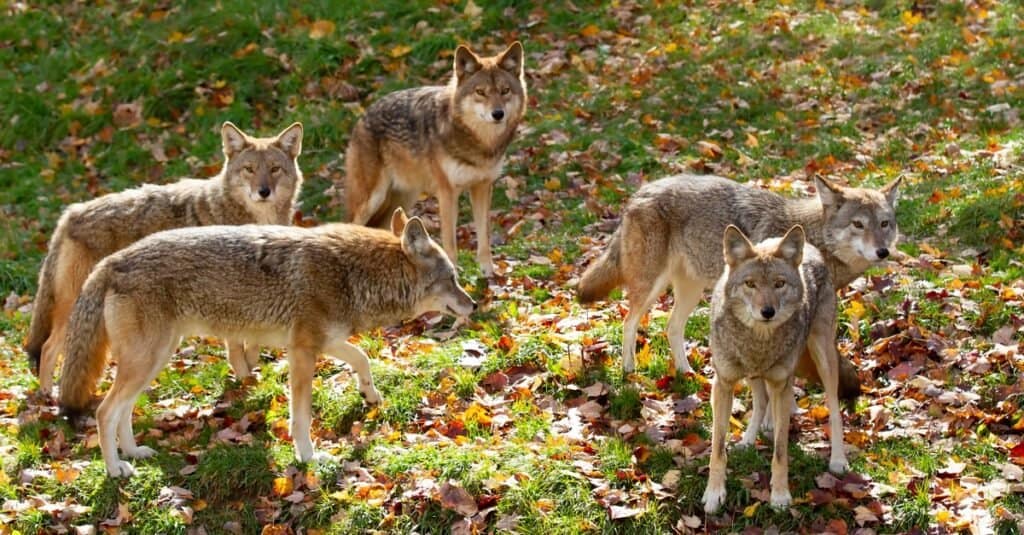
During colder seasons coyotes tend to hunt during the day more often to stay warm.
©Jim Cumming/Shutterstock.com
Coyotes are predators and hunt during the night. They can hunt more efficiently at night due to less opportunity of being seen. Not to mention that their vision is also amazing during the night. You will most likely see an active coyote hunting during dusk and dawn hours. However, during colder seasons they tend to hunt during the day more often to stay warm.
9. They Are Typically Shy in Nature
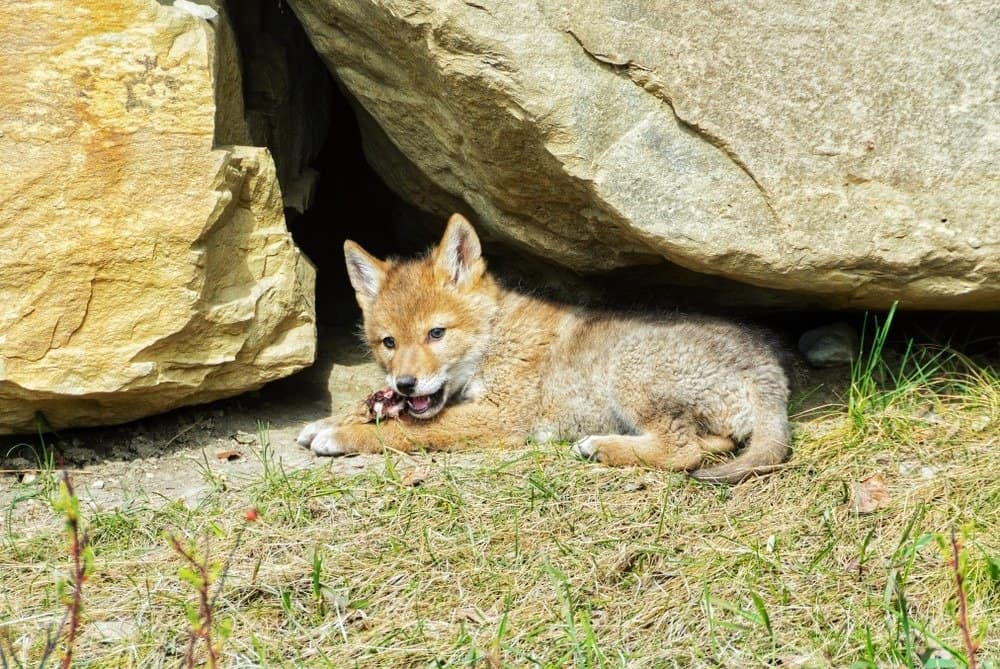
Coyotes are typically shy in nature and are unlikely to attack a human.
©Muriel Lasure/Shutterstock.com
Like many wild animals, coyotes are typically shy in nature when exposed to both threats and humans. They will more than likely try to flee a situation that makes them uncomfortable. However, if they feel too threatened or have pups nearby, they will still have the instinct to attack and defend. It is unlikely for a coyote to attack a human. However, just know that it is still possible to maintain a safe distance when one is near. Also, be sure to keep your small pets and livestock protected.
10. They Live in Major Cities

Since coyotes are closely related to the domesticated dog, humans often want to approach them.
©iStock.com/dmodlin01
Although they are wild, coyotes can also live amongst humans in big cities. In fact, they live in virtually every large city in America. This is due to their excellent adaptation, and more food sources, but also because humans have reinforced their behavior. Since they are closely related to the average domesticated dog, humans often want to approach and feed them. Because of this, city-populated coyotes are often less likely to attack. It is highly recommended not to feed these wild animals. It can upset the balance of their natural diets. If you suspect one is in need of help, call your local animal control.
The photo featured at the top of this post is © sumikophoto/Shutterstock.com
Thank you for reading! Have some feedback for us? Contact the AZ Animals editorial team.



